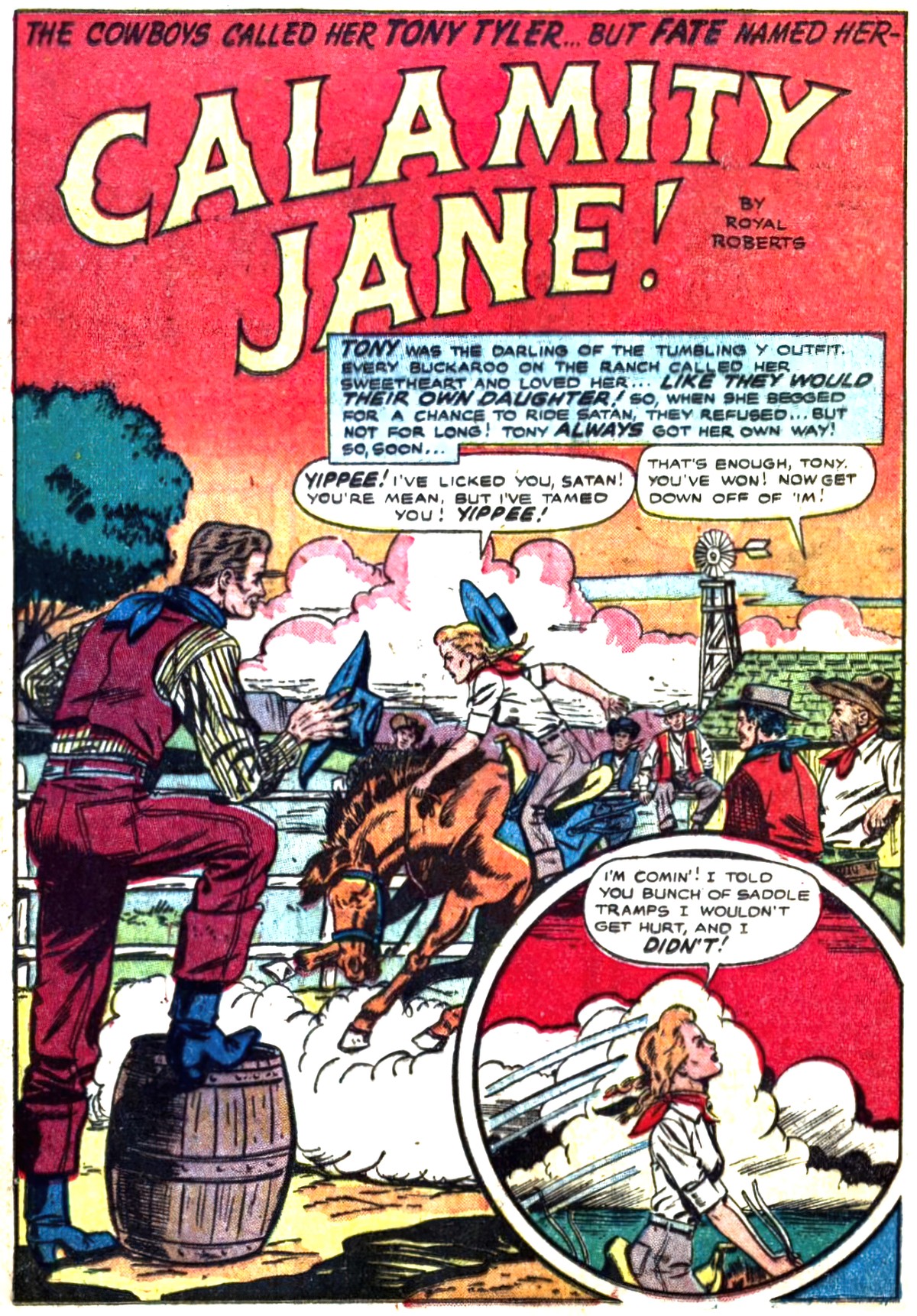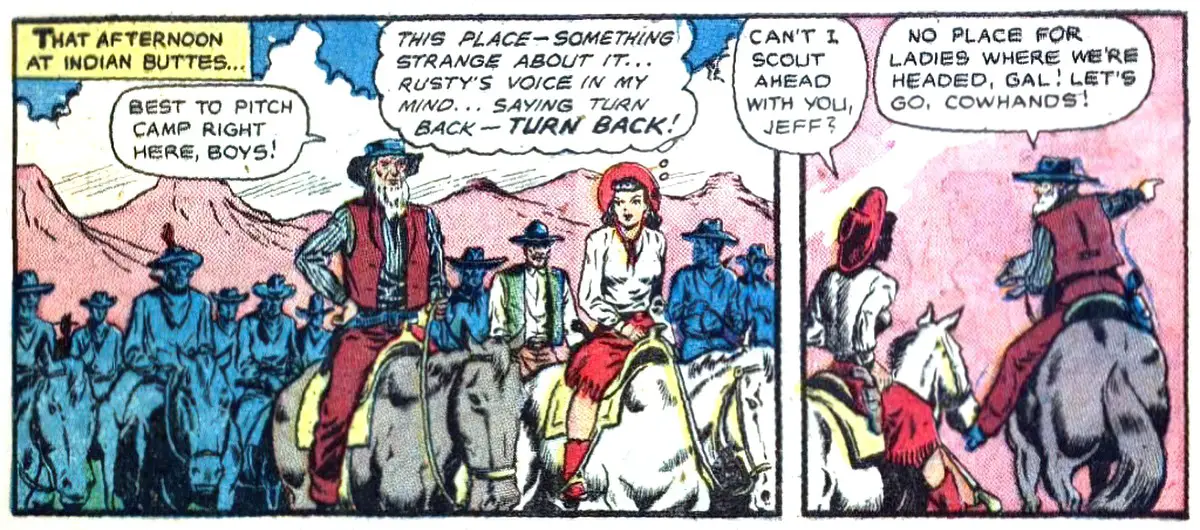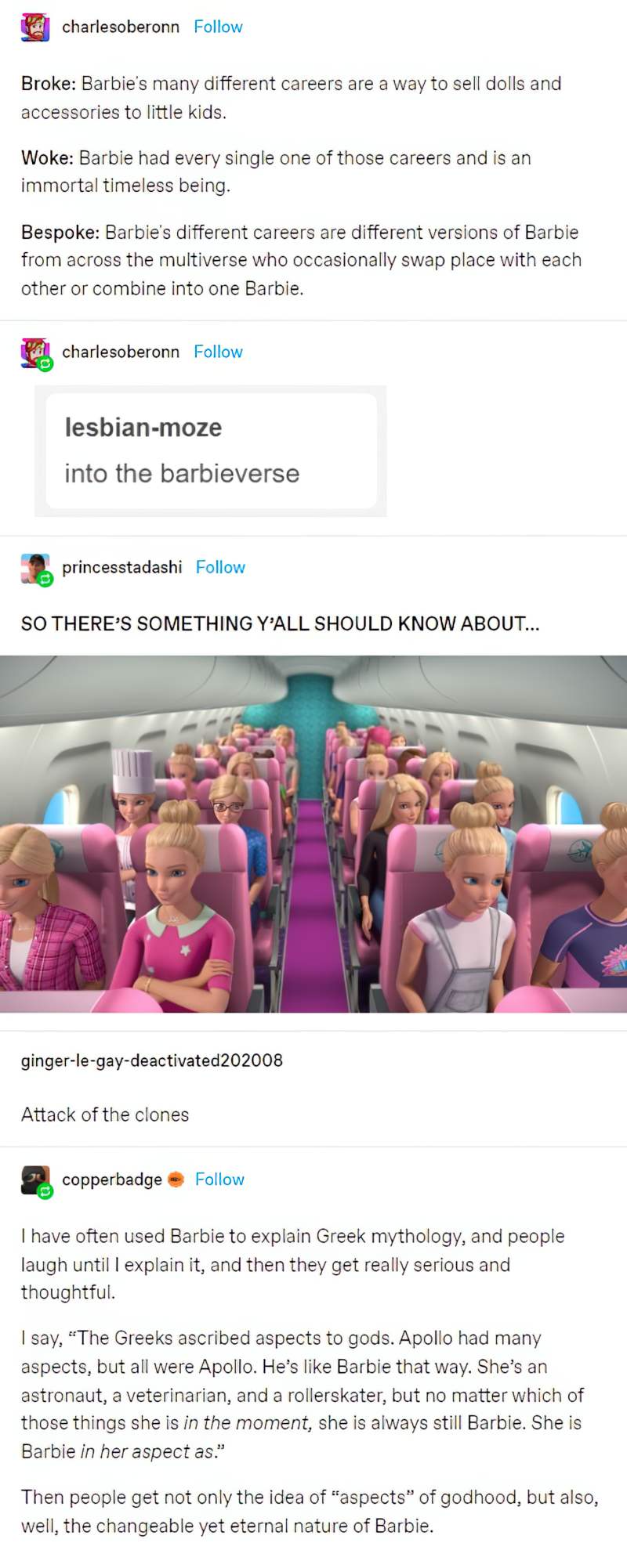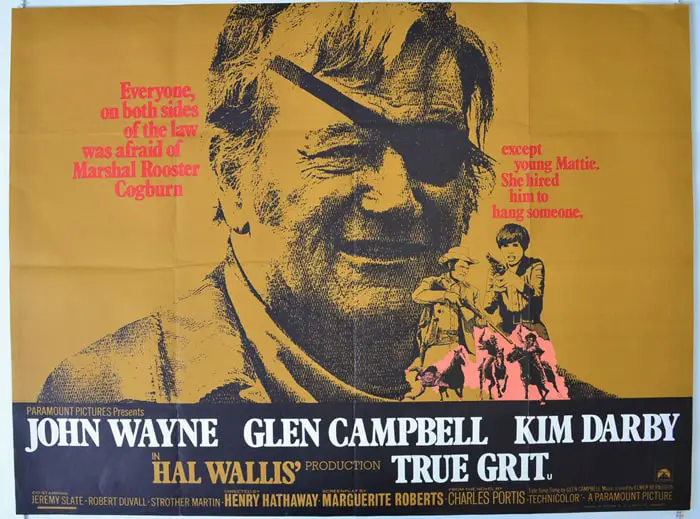When iconic Australian film critics Margaret and David reviewed the 2010 film True Grit they did enjoy it, but couldn’t see the point of a remake. The 1969 original stood the test of time, so they said. That’s what made me watch the original. Turns out the 1969 film is benign enough to watch with my cowboy-loving primary school aged daughter, who loves it to bits.
The two versions are very similar in plot. Any difference is mainly in tone.
The Coen Brothers also modernised Charles Portis’ novel by turning it into a mumblecore, which I understand better with subtitles, but the 1969 actors were stage trained, and speak with clear enunciation. Again, better for kids.
The novel is a first-person narrative recounted by a one-armed old maid. The Coen Brothers adaptation is more faithful to this dark detail, depicting Mattie at the end with no arm. The 1969 film ends with Mattie’s arm in a sling. For all we know, she’s going to fully recover, limbs intact.
What can storytellers learn from True Grit?
Genre Blend of True Grit
Listed on IMDb as Adventure, Drama, Western.
The Western is itself a blend of genres, using the American West of the 1800s as a setting.
The Coen Brothers remake is not a western at all. It is simply set in the West. At best, True Grit is an anti-western. In 1969, True Grit was widely thought to be a parody of a western. It depends on your definition. Are you talking about the setting, the plot or the themes? Setting-wise, it’s a western. Thematically, it’s not a western but a crime story.
REVENGE WESTERNS
If there are 7 basic plots of all Western stories, True Grit can be considered a Revenge Western. Revenge is a form of wish fulfilment. We see it in stories for all audiences, including in stories for children, in which they tend to be super popular. Matilda by Roald Dahl is the ultimate revenge fantasy.
Like almost all stories from the Revenge Western subgenre, the plot involves an elaborate chase and pursuit by a wronged individual. In other words, this is the Western equivalent of a cat-and-mouse story. Some of these Revenge Westerns also include elements from a classic mystery story, though not True Grit. Mattie is so capable that she solves any technical difficulties off-screen. She knows exactly what she wants and exactly who she must see in order to get it.
Revenge stories grip us because of their mythic excess. Another example of a Revenge Western is The Searchers (A John Wayne film from 1956) in which An American Civil War veteran embarks on a journey to rescue his niece from the Comanches. Ethan and Martin wander over the Southwestern landscape. As we watch them, the audience becomes aware of the depth of the vengeful main character’s alienation from the ‘sivilisation’ once equated with anything feminine. Consider this a kind of gender inverse of Thelma & Louise, in which two women are similarly alienated, then escape from all things masculine.
Linda Williams has said that when a female character (or female duo) lights out to seek vengeance, the audience expects her motivations to be stronger than it might be if she were a man. There’s something alienating about a woman with a gun and a chip on her shoulder. This may have changed in recent decades (for better or for worse) but male viewers were initially alienated by Thelma & Louise while women found it empowering (as a cohort). When writers create stories about women seeking vengeance, they tend to make them true underdogs, whereas we accept men who set out to avenge a villain like a superhero, asking “Well, who needs saving today?”
This can be easily explained, and is beautifully explained by Kate Manne in The Logic of Misogyny. According to Manne’s definition of misogyny (the ‘police force’ which works below the fabric of society to uphold the patriarchal status quo):
women are obligated to give to him, not to ask, and expected to feel indebted and grateful, rather than entitled. This is especially the case with respect to characteristically moral goods: attention, care, sympathy, respect, admiration and nurturing.
Down Girl by Kate Manne, “Eating Her Words”
Since women are expected to feel indebted rather than entitled, revenge is coded unfeminine, and writers (as well as women themselves) must work harder to win approval for stepping outside the norms.
How did the writers achieve sympathy when it comes to Mattie Ross? They basically have her step in as a proxy man. She’s acting on behalf of her dead father. The fact that she’s so young — a girl, really — is a bit ‘man bites dog‘. “Wow, a girl, and so young, out there on the prairie,” we think. I’m reminded of those films from the 1980s with highly precocious talking toddlers—aiming to be interesting as an exhibition in its own right.


WESTERNS AND WAR STORIES
Westerns have a similar structure to a subcategory of war story. As in a war story, the first half deals not with the chase itself but with the preparation for it. The social unit is central to war films, and the social unit is central to True Grit, too, with this odd combo of characters functioning as found family. It takes time to establish these people as a coherent fighting force, which is why so much time is dedicated to it before we see them on the road. When I watched this film again after a few years I had forgotten how much time was dedicated to the preparation.
The Difference Between War Films and Westerns
Westerns are set in frontiers and war films are set at the front. Both are places where colliding forces clash against one another. At the front in war films, large numbers of people follow rigid rules that come from military organisations. At the frontier of the western, there are usually few people, and because they are far away from any organisation’s power, the rules are weak or nonexistent. The emphasis in war films is thus on courage and tests of strength, while in westerns it is on morality and tests of will.
Howard Suber
For writing purposes — if you’re in the business of studying plot — True Grit is a crime drama utilising mythic structure, set in the old west.
Logline
A drunken, hard-nosed U.S. Marshal and a Texas Ranger help a stubborn teenager track down her father’s murderer in Indian territory.
Logline Annotated
A premise is a combination of CHARACTER and PLOT.
A drunken, hard-nosed U.S. Marshal and a Texas Ranger help a stubborn teenager [SOME SENSE OF THE MAIN CHARACTERS] track down [SOME SENSE OF AN OUTCOME] her father’s murderer [EVENT THAT STARTS THE ACTION] in Indian territory.
The promise in the logline: There will be a chase. The murderer will be confronted face-to-face (we know this because it’s a ‘western’). We have to find out who wins the struggle by watching the film.
Also in the logline: the shortcomings that are ruining the characters’ lives. Rooster Cogburn is drunken and hard-nosed. Mattie Ross is stubborn. The Texas Ranger is not otherwise described. He is a bit-character after all, and sacrificed as sidekick to the main characters.
We’re also given the setting ‘in Indian territory’.
SETTING OF TRUE GRIT
True Grit is set across Arkansas and Oregon in the Old West, or rather the popular imagining of how Arkansas was back in 1878 (which by the way, is the same decade Lonesome Dove is set). Mattie’s father is killed in Fort Smith on the Oklahoma border. The murderer has fled into ‘the federal territories’ to escape the law. The book is set in the middle of winter, which makes the environment super harsh. However, the 1969 movie was filmed in autumn, with beautifully coloured trees.
According to An analysis of True Grit from the True Grit Roundtable Podcast these forests don’t exist in that part of America. There may have been practical reasons why the film crew couldn’t/wouldn’t film in a wintry Rockies, perhaps to do with John Wayne’s advanced age. In any case, the autumn vistas in the film make the setting a lot more accommodating than they would have actually been.
Calvinism
Perhaps more apparent in the novel, Mattie the old maid extradiegetic narrator is Calvinist — representative of the people who settled in the Ozark hills in the 19th century.
Unlike other major Protestant churches, Jean Calvin stressed equality before God in the sense that people had the right to choose their own priests and by extension their own rulers. This didn’t go down well with a lot of the kings and princes that embraced Protestantism as a means to expand their own power base. There’s no pope. Calvinism was about austerity and predestination.
Contrast with Anglicans (Church of England), who in the beginning were not that different from Catholics apart from their unwillingness to accept the Pope.
Lutherans are followers of Martin Luther. Lutherans are pretty similar to Calvinists, except Luther didn’t reject the Catholic notion of transubstantiation outright, simply modified it. Also, Luther said salvation is independent of merit and worthiness. Anyone can attain salvation through faith. Calvinsalvation is about predestination (a chosen few).
Baptists and Methodists came along later — these are more mystic forms of Christianity. Mormons are different again — more elaborate, strict and centralized.
Mattie’s Presbyterian upbringing (heavily influenced by her Calvinist environs) means she disapproves of Rooster’s drinking, not to mention his lack of religion. She probably has a pretty strong sense of religious entitlement. If she thinks she’s one of the chosen few who deserves salvation, maybe she’s interpreting this scripture to her advantage as she goes about avenging a murder by murdering in her own right.
Political Climate
Mattie was brought up to hate the Republicans of the Reconstruction. This was a new kind of Republican party which came about during the Civil War. They wanted to free slaves and give them the right to vote.
Old Mattie doesn’t know what to think of Al Smith, who is a Democrat like Mattie, but also a Catholic. In fact, he was the first Catholic nominee for President, and he mobilised a lot of Catholic votes, especially from women, who had only recently achieved emancipation (1920) when he ran in 1928. Protestants feared a Catholic President. They thought the Pope would have too much say in how American ran its business. Protestants were also fans of prohibition at that time, and Catholics tended to be drinkers. Al Smith was anti-prohibition. He lost the presidential election to Calvin Coolidge because of his Catholicism. Or, that really didn’t help. (Calvin Coolidge was named after Jean Calvin, of course.)
Mattie ends up giving Smith the benefit of the doubt because he’s not a Republican at least. Like Al Smith, she uses weaponry to get her way.
Rooster is a veteran of William Quantill’s crew in the Civil War — at this point in America’s history everyone is still living in the shadow of this war. The Quantrill crew was particularly murderous. Rooster Cogburn is thought to be based on a composite of historical characters, but on one in particular.
See also: Episode 145 of the Then Again Podcast: Portraying Historical Characters with Gene Harmon. “Museums and other heritage sites have different ways of engaging their visitors with the content and history that they preserve. Two methods of historical interpretation that have been growing in popularity in the past several decades are living history and historic character portrayals. These methods bring history to life and engage the visitor in a personal way, but what goes into creating these historical experiences? A LOT!”
None of this political stuff comes out in the film adaptation because there’s no wrapper story told in 1923.
Symbolism
In Wild West days it was far more common to see people walking about with missing eyes and limbs and teeth. In modern stories these losses are also symbolic. Rooster’s missing eye is basically the equivalent of the one-legged Long John Silver. Mattie is fascinated by Rooster in the same way that Jim Hawkins is fascinated with Long John. Later, of course, Mattie loses one arm, joining her hero in physical imbalance.
POINT OF VIEW
True Grit was published 50 years ago. It first ran as a serial in the Saturday Evening Post, then Simon and Schuster published a hardback edition.
Because the novel is written in first person from the point of view of Mattie, all of the dialogue is theological and out of date. This is deliberate, of course. Charles Portis did not create Mattie herself to have the literary voice of a novelist. But a lot of the dialogue from the book was brought into the movie, and here it doesn’t sound as natural as it should have. Mattie as storyteller has been lost. So the screenwriters should have modified the dialogue of the villains to suit their character. This is something the Coen Brothers did fix really well. The dialogue is much more distinct from character to character.
In narratological terms, Mattie is a homodiegetic, extradiegetic narrator. She is part of the story she tells, but she is telling it as an old lady, which means she’s distanced from it.
The 1969 movie attempts to break free from Mattie’s limited point of view but doesn’t quite go far enough. The 2010 adaptation achieves a more omniscient point of view.
In the novel Mattie is not a particularly likable character.
She is severe and unforgiving, the antithesis of the archetypal freewheeling American youth as embodied by Huck Finn or Holden Caulfield. “I would not put a thief in my mouth to steal my brains,” she intones when Cogburn offers her a sip of whiskey as medicine.
The Coen brothers, who remade the film in 2010, likened the character to Alice in Wonderland. Donna Tartt compares her to Dorothy in The Wizard of Oz in an afterword she wrote for the 2011 paperback edition of the book. She has gone through the looking glass, having left the relatively civilized environs of Dardanelle for the Oklahoma Indian Territory.
And it’s true she has a relentlessness similar to Dorothy, but she doesn’t want to go until after she’s had her vengeance. Mattie is a civilizer, a law reader, an organizing principal — as much a symbol of imposed order as a piano in a homestead parlor. An unforgiving moralist, an Old Testament raver like John Brown, an imperial tamer of chaos who’s perpetually suspicious of others’ motives. She lights out for the wilderness not for the freedom that it promises, but to extend her Scots Presbyterian notions of justice. […]
Mattie is a cranky old maid, but we can love her for the creaky humanity that leaks through her Scotchgarded facade — her affection for her game pony, her pal Little Blackie, her affecting (and affected) rhetorical habits which include the seemingly random use of “quotation marks” to preserve the authenticity of the story she is telling us. Mattie’s dryly musical voice is a miracle of vernacular precision and authorial intent — she reveals only and exactly what is necessary.
A key to that voice might be found in Portis’ personal history. After a stint in the U.S. Marine Corps* during the Korean War, Portis enrolled in the University of Arkansas and worked for Fayetteville’s Northwest Arkansas Times. One of his duties was editing the correspondence columns written by little old Mattie-type ladies who lived in the hinterlands. He confessed he edited all the character out of their copy; perhaps he saved it up for Mattie.
Arkansas Online
STORY STRUCTURE OF TRUE GRIT
Picking out ‘the main character’ is not always easy. True Grit is a prime example of a story with two main characters exhibiting the same character traits but in different outworkings. Mattie’s stubbornness is the same as Rooster’s hard-nosed-ness. But one is an old guy tip-toeing along the wrong side of the law, while the other is a young woman who could easily go the same way, but who has been wronged. For now she is on the right side of the law. It feels inevitable that these two characters find one another. They are two sides of the same coin, in the same way a criminal often has the exact same strengths as the detective in a typical crime drama.
By god, she reminds me of me!
Rooster Cogburn
Putting it another way, Mattie and Rooster are different only in their aspect (like the Greek god Apollo and… Barbie.)

The logline posits Mattie as the main character, ‘helped’ by the two men.
- Mattie drives the action.
- We see Mattie on screen from the first scene to the last. Mattie is our guide into unfamiliar territory. When Mattie watches the hanging in the town square, the audience sees through Mattie’s eyes. We’re as awed as she is.
- But it is Rooster who changes the most, because Mattie is an example of The Female Maturity Formula, starting off as a sensible little mother, ending the same way. Rooster learns to care for another human being.
- I’m guessing an audience finds Rooster and Mattie equally interesting.
- I identify more with Mattie, myself. But she is almost a superhero archetype. Charles Portis is a writer who lists ‘grit’ as a necessary character attribute, but some of his characters acquire grit; others are born with it. Mattie is born with it. She is preternaturally mature, articulate and self-assured. She achieves the almost impossible, joining two world-wise men in an environment overtly hostile to women on a trek through dangerous territory. Mattie’s humanity only becomes apparent during the last third of the film when she gets into a life/death situation and needs to be rescued by the older men. Mattie is not in fact a superhero.
SHORTCOMING
Mattie’s flaw is that she is single-minded, but this is also her strength. Shortcomings are at their most powerful when those same traits function as strengths.
Rooster is a fairly cliched alcoholic. Unlike other alcoholics crated by Charles Portis, Rooster is unable to do his job properly because of it. Here’s what Matt Bird has to say about alcoholism as character flaw:
Flaws need to have an upside, which is why some just don’t work very well. One of the most overused flaws is alcoholism, but it’s not as compelling as some writers think because there’s very little upside. It’s hard to overcome, but only because it’s a chemical addiction. There’s never any good reason to be an alcoholic. We’ll never identify with a character’s desire to keep drinking destructively.
The Secrets Of Story, Matt Bird
The thing is, Portis isn’t using alcoholism as a flaw — Rooster has many others — but as a plot device. It’s because Rooster is drunk that he fails to load Mattie’s gun properly and that’s why it backfires. Otherwise she’d have killed her father’s murderer before the story was over. The misfiring gun keeps the big struggle going for as long as it needs to go for. Rooster’s reliance on the drink also contrasts nicely with Mattie’s up-and-go attitude.
I would add that any disease used as a flaw isn’t going to work; worse, writers run the risk of ableism.
DESIRE
Mattie wants to hunt down the man who killed her father. She wants to see him killed in front of her, and hanged in her own town, in respect of her father’s memory. As Rooster points out, this is a lot to ask. He tells her this at one point, in what’s known as ‘attack by ally’ that what she’s asking might be impossible. Isn’t it enough to see the man dead? Dead is dead. Mattie replies that she wouldn’t be happy with just dead. She is ruthless in her desire to see him hanged in her father’s town.
OPPONENT
The ‘Big Bad Monster’ opponent is the guy who killed Mattie’s father. He is horrible. Unpredictable, unsympathetic… a monster for storytelling purposes, who wreaks havoc in every town he visits.
But for a story to work this big bad monster isn’t enough. There needs to be conflict within the group. Rooster makes an excellent opponent for Mattie, as well as an ally. This is similar to the progression of a love story, except that kind of creepiness is never on the table — that’s why Rooster calls Mattie ‘baby sister’. He considers her family, and the audience doesn’t have to worry about the gender issues. The book is much less clear about Mattie’s age. She herself obfuscates it in the retelling, and it feels to the reader that there may be some erotics of abstinence going on, precisely because she doesn’t mention any such feelings for Rooster.
Contrast Rooster with the Texas Ranger who initially sees Mattie as a love interest. Mattie isn’t having any of it. Le Boeuf (pronounced La Beef). The three remain opponents until they learn to rely on each other.
PLAN
We’re not let in on Mattie’s plans — we see her carrying them out. In stories, characters rarely tackle problems head on, but Mattie is an exceptional character in this regard. This is because she is young and naively optimistic that she can do anything. Her plan eventually fails when she comes face to face with her main opponent by complete accident. No amount of excellent planning can account for this kind of coincidence. In the end, Mattie is literally in a massive hole and she must rely upon others to rescue her. She can’t plan her way out of that.
BIG STRUGGLE
A series of big struggles, accidentally with the murderer when Mattie slips down a bank towards a river, and then with the other outlaws, culminates in a highly symbolic fall into a snake pit. This scene is less harrowing and drawn out than the one in the novel.
ANAGNORISIS
Okay, so in the film there’s no hypodiegetic narrator — just a level zero narrative. In the level zero story, it is Rooster and La Boeuf who have the revelations — first La Boeuf, who learns to respect Mattie despite her being a young woman. Presumably he will transfer this respect to others in his life, except then he dies. Then Rooster softens and learns to call Mattie family. By being nice to someone else he finds that he in fact really likes her, in what’s known in psychology as The Ben Franklin effect.
When Mattie is the storyteller, she has her own anagnorisis in the telling of the story. This is lost in the film, and that’s why it becomes an example of the Female Maturity Formula.
NEW SITUATION
In the film, Mattie tells Rooster she’d like to bury him in her family plot and Rooster agrees to this and says a proper goodbye. We are left with the feeling that Mattie will lead a pretty normal family life from here on in, getting married, having her own children.
In the novel, Rooster gets Mattie to a doctor who saves her life after she is bitten by the rattler, but when she comes to, Rooster is gone. She learns later that he is part of a Wild West show and she goes to see him perform in Memphis. But he dies several stops before Memphis in 1903. She retrieves his body and buries it in her own family’s plot. Mattie has not managed to get married and have her own family, possibly because of the events and trauma of this very story, and because of her conflicted feelings for Rooster.
So the book is more of a love tragedy whereas the 1969 film has a tidy, satisfying ending.

